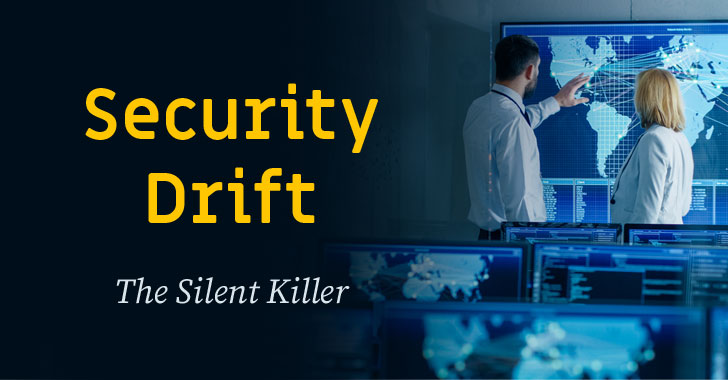predicted to
exceed $1 trillion during the period of five years, between 2017 to
2021, with different analysts predicting the Compound Annual Growth
Rate (CAGR) at anywhere between 8 to 15%.
It is not surprising to see this growth in spending, which is
primarily driven by the evolving sophistication and volume of
attacks as well as the surmounting costs of a successful data
breach.
And yet, data breaches continue.
The sad news is that about 80% of data breaches can be prevented
with basic actions; such as vulnerability assessments, patching,
and proper security configurations[2].
The specific reasons vary; but include staffing and resource
issues, lack of expertise to optimize complex, multi-vendor
security systems, and a host of other reasons. Whatever the
specific cause, the common theme is that security lagged either
internal IT changes or changes in the external threat
landscape.
The phenomenon is well known in technology spheres – from things
like configuration drift as applications and platforms change
without reorganization; to Cloud drift as new serverless resources
evolve to suite point-issues but are not accounted for in overall
infrastructure growth estimates. Because of this, we’re looking at
a new form of drift centered primarily on changes that impact
cybersecurity – essentially a security drift.
IT & Security Teams Face a Double Whammy
On the one hand, security teams have to continuously address
evolving threats and adversarial sophistication, and on the other,
IT teams are continually adapting to change and making alterations
to environments that can create security drift, some addressed, and
some invisible.
At the end of the spectrum are high-visibility changes revolving
around hot topics like Information Technology and Operational
Technology (IT/OT) convergence – and these usually (though not
always) get concurrent attention from cybersecurity teams.
At the other end of the security drift spectrum, it’s day-to-day
maintenance operations that may not get the deserved attention from
security teams. These include routine activities such as software
updates for new features, bug fixes, and vulnerability patching,
and the upgrade or replacing of commodity software that does not
require major planning.
No matter if the changes are happening to new systems going into
production, or existing systems in production, the drift is created
as the changes are made without security oversight or with
insufficient security oversight.
Unfortunately, there are many examples of security drift
situations where routine software updates and IT changes introduce
vulnerabilities that require discovery and patching:
A high-tech company that had a robust (or so they thought) A/V
solution allowed for a three-week patch drift for 2% of its
systems. This was because some systems required testing before
patching (due to OS and application concerns), and others were
delayed due to operational constraints. The company was hit by a
worm that was propagated to almost all unpatched systems, close to
3,000 machines.
The consequence was a denial of service from within that
disrupted business and hampered remediation and restoration of the
company’s IT systems.
A multinational outsourcing company deployed FTP servers for the
purpose of dedicated file sharing with their customer. Their
procedure for onboarding a new customer was to clone an existing
service, change the default credentials, exclude the new system
from DNS, and test the new system within a week of deployment.
Unfortunately, in one case, the lag between deploying and
testing was enough for a hacker to find a system that was
inadvertently left with default credentials and penetrate the
customer’s data at great cost to the outsourcing company. The
security drift created by the new instance created the opening that
an adversary needed to initiate and successfully complete an
attack.
These examples are significant in size and impact, but it’s the
small examples of security drift that are the true silent killers,
the proverbial loss of a nail in a horseshoe that loses the
kingdom.
For example, a Web Application Firewall that was misconfigured
and placed into learning mode (monitoring only) and a case in which
IT changed the name of a server that had restricted access. The
name-change inadvertently made the server accessible to everyone.
Luckily, this was detected before any damage was incurred, and the
rule that enforces the access policy was updated.
There is one thing that links all of these incidents together.
Security drift is the consequence of change, and security
operations are either unaware of the change or its significance. In
some cases, it will create manageable risk, and in other cases, the
risk demands immediate attention; but in all cases, the drift
exists and puts the organization at risk. This lack of insight
makes security drift the silent killer.
Avoiding the Silent Killer
The traditional practice for identifying and dealing with security
drift is a combination of IT procedures and policies, vulnerability
management systems, and pen-testing. While vulnerability scanning
provides near-real-time results; pen testing does not. This may
provide a lengthy window for security drift to occur that is
unacceptable.
A new paradigm of security validation is becoming widely
available for the security Blue Team, one that automates security
validation in production environments. Complementing periodic pen
testing by filling in the void between tests, continuous security
validation becomes a powerful way to reduce the impact of security
drift by detecting and identifying instances of drift in
near-real-time.
Continuous security validation with Breach and Attack Simulation
platforms can match the rate of internal and external change with
the ability of the organization to detect changes that create
weaknesses and gaps to help manage security drift better. Don’t let
the silent killer getya’.
For more information, visit www.cymulate.com[3]
and register for a Free Trial[4].
References
- ^
predicted
(cybersecurityventures.com) - ^
configurations
(www.cyber-observer.com) - ^
www.cymulate.com
(cymulate.com) - ^
Free
Trial (cymulate.com)
Read more http://feedproxy.google.com/~r/TheHackersNews/~3/Na346CwKnXE/security-drift-silent-killer.html
